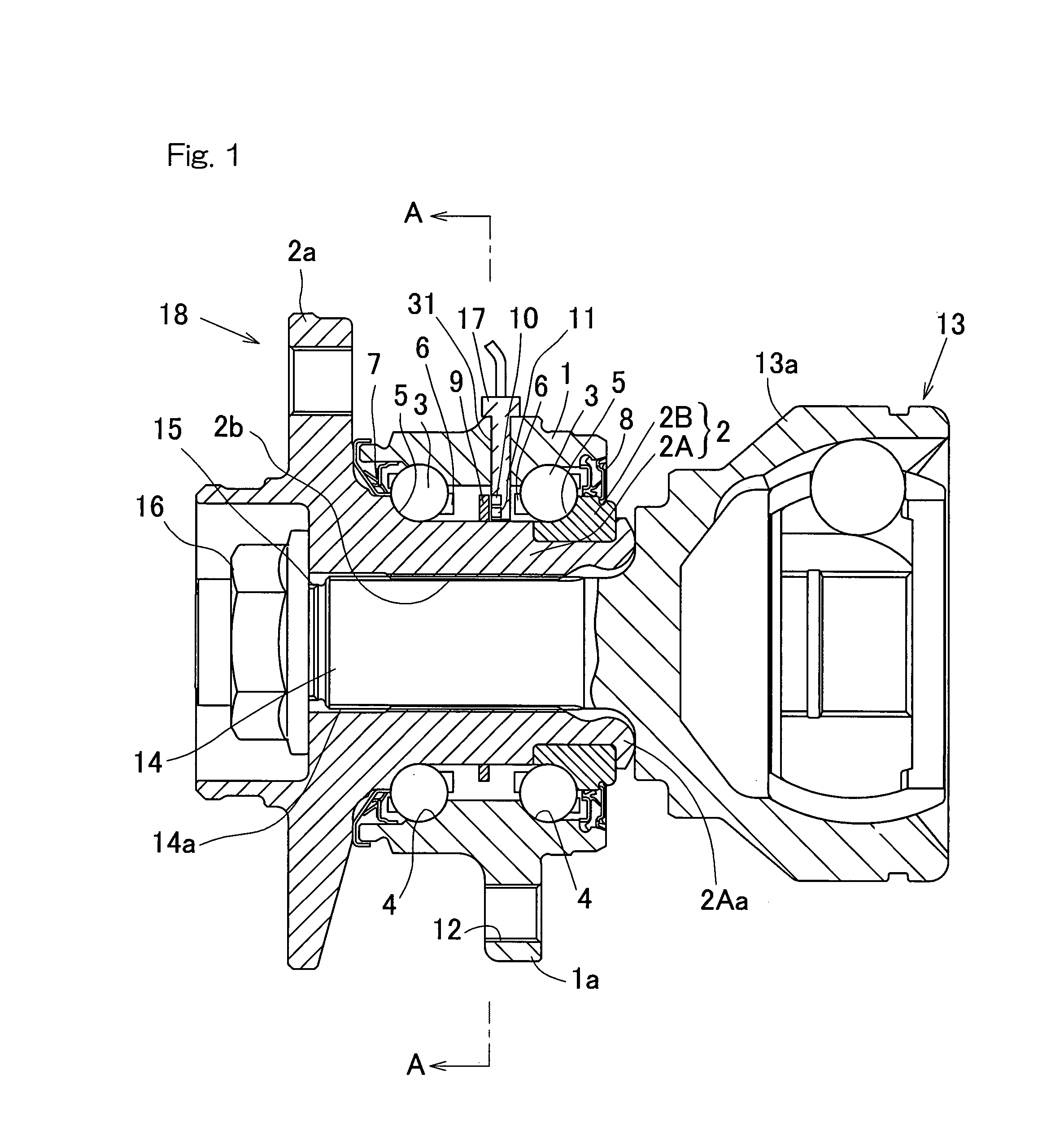Sensor-incorporated bearing assembly for wheels
a technology of bearing assembly and sensor, which is applied in the direction of instruments, force/torque/work measurement apparatus, transportation and packaging, etc., can solve the problems of uneven load acting on the wheels of the vehicle, insufficient detection of only the rotational speed, and insufficient load uniformity, etc., to achieve simplified structure, reduce the number of components used, and stable
- Summary
- Abstract
- Description
- Claims
- Application Information
AI Technical Summary
Benefits of technology
Problems solved by technology
Method used
Image
Examples
third embodiment
[0065]FIG. 10 illustrates in circuit block diagrams, one example of the signal processing circuits forming the detecting circuit 36 for detecting the rotational angle and the load, respectively, based on the respective outputs of the two displacement sensors 10a and 10b according to the In this detecting circuit 36, the output signals from the two displacement sensors 10a and 10b are converted by separate signal processing sections 19 into analog signals, respectively; an average value of those two signals is determined with an angle detecting section 20A; and a result thereof is compared with data in the correction table 21A to provide the rotational angle. Independently thereof, the difference between the two signals that have been converted in the signal processing sections 19 into the associated analog signals is calculated by a load calculating section 22A, and a result of such calculation is then compared with data in the load table 23A to thereby provide the axial load actin...
first embodiment
[0069]Also, although in describing each of the foregoing embodiment reference has been made to the use of the magnetic sensor of winding type for each of the displacement sensors 10 and 11, a sensor system, in which a magnetic loop is formed with a magnet 37, a magnetic detecting element 38 such as, for example, a Hall integrated circuit capable of providing an analog output, and a yoke 39 made of a magnetic material, may be employed such as a fourth preferred embodiment shown in FIG. 11, for each of the displacement sensors 10 and 11 used in the practice of, for example, the It is also to be noted that in FIG. 11, the two displacement sensors 10 and 11 are displaced relative to each other in the circumferential direction.
[0070]The value detected of the angle and the value detected of the load in each of the foregoing embodiments described hereinbefore are incorporated in an ECU (Electric Control Unit) of an automobile and are utilized for the control of the travel stability of the...
PUM
 Login to View More
Login to View More Abstract
Description
Claims
Application Information
 Login to View More
Login to View More - R&D
- Intellectual Property
- Life Sciences
- Materials
- Tech Scout
- Unparalleled Data Quality
- Higher Quality Content
- 60% Fewer Hallucinations
Browse by: Latest US Patents, China's latest patents, Technical Efficacy Thesaurus, Application Domain, Technology Topic, Popular Technical Reports.
© 2025 PatSnap. All rights reserved.Legal|Privacy policy|Modern Slavery Act Transparency Statement|Sitemap|About US| Contact US: help@patsnap.com



